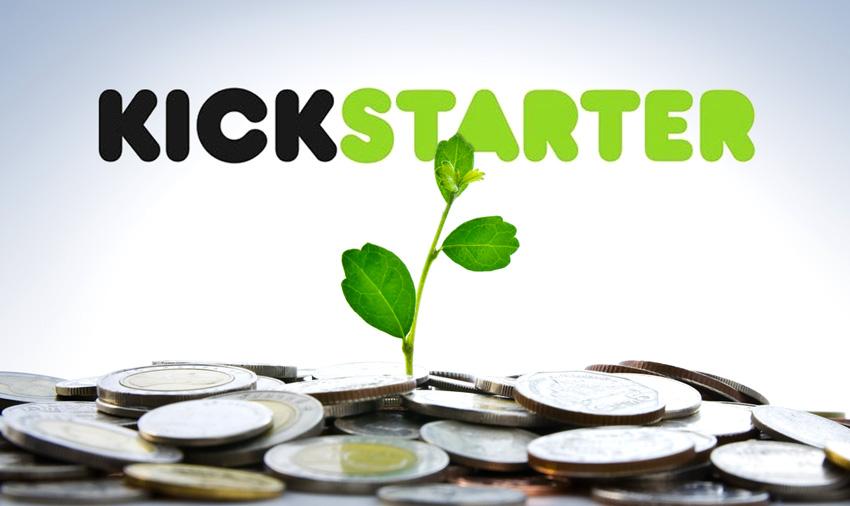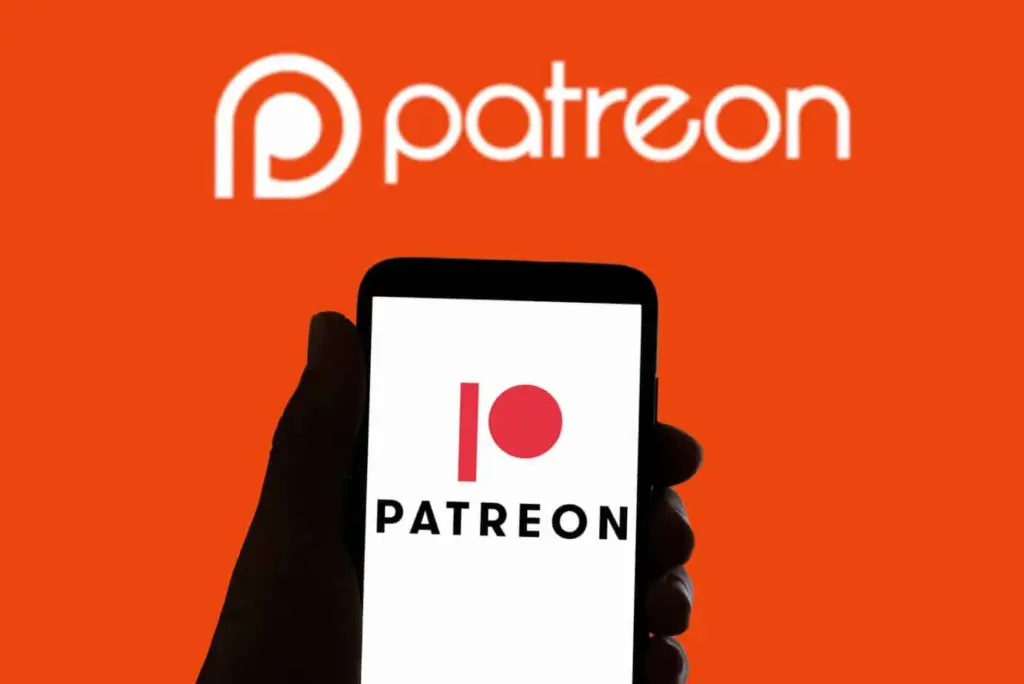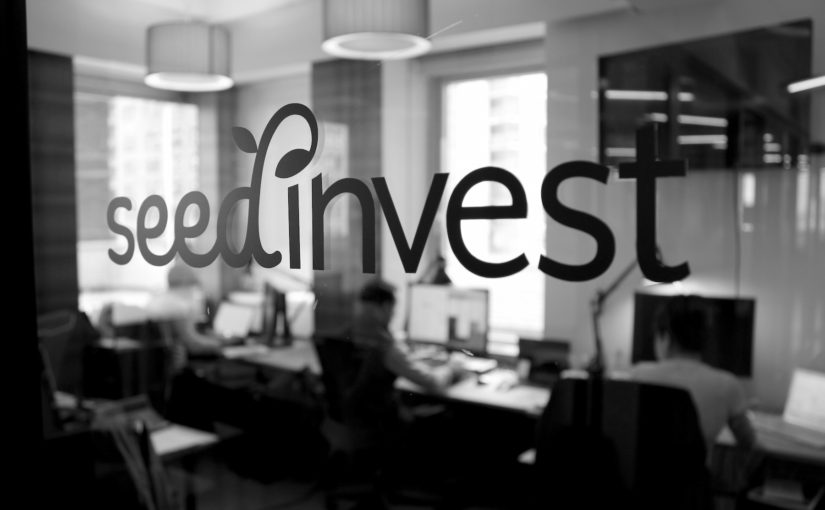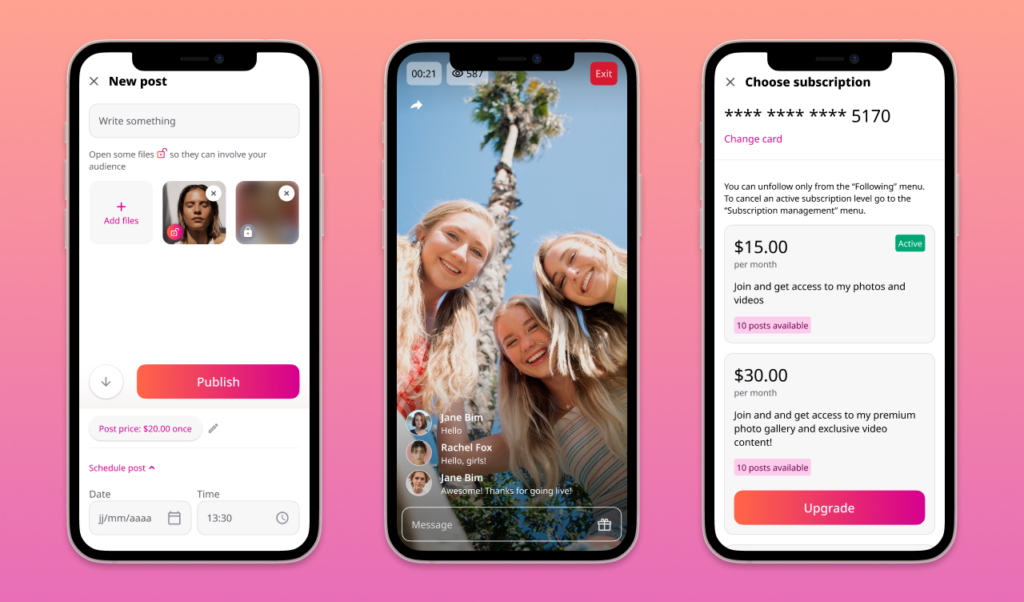The Rise of Crowdfunding
Crowdfunding has changed how we raise money. It used to be that only big investors or banks could fund new projects. Now, platforms like Kickstarter, GoFundMe, and Indiegogo have made it easy for creators and entrepreneurs to get support directly from people. In this article we will dive deeper into how to start a crowdfunding platform by yourself.
In simple terms, a crowdfunding website is a platform where people share their projects with the public and ask for financial support. In return, backers either receive rewards, equity in the business, or simply help for a cause. It’s not just about the money — it’s about building a community around an idea.
For example, Kickstarter alone has helped raise over $7 billion for various projects. It’s easy to see why so many people are interested in starting their own crowdfunding platforms.
With platforms like Scrile Connect, anyone can now start a crowdfunding business without needing to build everything from scratch. You get a ready-made platform that can be customized to fit your exact needs, whether you want to support creative projects, social causes, or niche markets.
| Model | Description | Example Platforms | Funding Structure | Ideal For |
|---|---|---|---|---|
| Rewards-Based | Backers receive tiered rewards or early access | Kickstarter, Indiegogo | All-or-nothing or keep-what-you-raise | Product launches, creative projects |
| Membership-Based | Recurring subscriptions in exchange for ongoing exclusive content | Patreon, OnlyFans | Monthly/annual pledges | Content creators, influencers |
| Equity | Investors receive shares or ownership stakes | SeedInvest, Wefunder | Investors expect financial returns | Startups seeking growth capital |
| Donation-Based | Pure donations without material returns | GoFundMe, Charitable causes | No minimum goal; donations retained | Nonprofits, personal causes, community projects |
| Debt-Based (P2P Lending) | Backers lend money and earn interest | LendingClub, Prosper | Fixed-term loans with interest | Small business loans, personal borrowing |
Why Crowdfunding?
Crowdfunding is a game changer for both creators and entrepreneurs. For creators, it’s more than just raising money—it’s about connecting directly with an audience who believes in what they’re doing. Whether you’re an artist launching a new project or a content creator building a community, crowdfunding lets you test ideas and build loyal fans before the product is even made.

For entrepreneurs, it’s a way to avoid traditional funding sources like venture capital or bank loans. Instead, they can validate their idea in the marketplace before they ever spend significant time or money on development. Crowdfunding offers immediate feedback and can help refine ideas.
Market Growth of Crowdfunding
Before answering on how to start a crowdfunding platform let’s talk about industry. The crowdfunding industry has seen exponential growth over the past decade, and it’s not slowing down. According to Technavio, the global crowdfunding market is expected to rise to $310 billion, with a 14.94% compound annual growth rate (CAGR) between 2023 and 2028.
This growth is driven by two key factors. First, the shift toward online business models. As more entrepreneurs and creators launch digital ventures, traditional funding avenues like bank loans or venture capital become less viable, especially for niche or early-stage projects. Crowdfunding bridges that gap, enabling entrepreneurs and creators to access direct financial support from their audience.
Second, the democratization of investment. Platforms like Kickstarter and Indiegogo have opened up new avenues where backers can support projects they believe in, either by purchasing products upfront or by investing in the company’s future success. This growing trend allows businesses to bypass traditional gatekeepers.
If you’re thinking about how to start a crowdfunding platform, these numbers show that the market is only going to get bigger. With more creators entering the space and a growing appetite for niche platforms, now is the time to seize the opportunity.
Types of Crowdfunding Websites
Crowdfunding platforms have evolved to serve different purposes, and understanding these variations is essential for choosing the right model for your project. Let’s dive into some of the most popular types of crowdfunding websites, including models used by platforms like Patreon and OnlyFans.
Rewards-Based Crowdfunding

Platforms like Kickstarter and Indiegogo are prime examples of rewards-based crowdfunding. Here, creators offer rewards in exchange for financial backing. It’s like pre-ordering a product or receiving exclusive perks. This model works well for entrepreneurs launching new products, creatives developing innovative ideas, or anyone seeking to validate a project with a built-in fan base.
Creators often provide backers with tiered rewards, encouraging larger contributions. Rewards-based crowdfunding is particularly useful when building a community around your project, ensuring backers feel personally invested in your success.
Membership-Based Crowdfunding (Patreon, OnlyFans)
Patreon and OnlyFans have popularized membership-based crowdfunding. Creators get ongoing financial support from fans in exchange for regular, exclusive content. Unlike one-time campaigns, this model relies on recurring contributions, making it perfect for content creators who need steady income streams.

For platforms like Patreon, artists, podcasters, and educators offer subscribers tiered access to exclusive content, such as bonus episodes or behind-the-scenes material. OnlyFans, on the other hand, caters to adult content creators and influencers, offering personalized content to paying subscribers. This type of crowdfunding is ideal for creators who continuously engage their audience and want to maintain a loyal community.
The subscription model offers creators more control and sustainability, as it allows them to directly monetize their content without intermediaries.
Equity Crowdfunding

On platforms like SeedInvest or Wefunder, backers invest in startups or businesses in exchange for equity—actual ownership stakes in the company. Unlike rewards-based crowdfunding, investors here are looking for financial returns, not just a cool product or exclusive experience.
Equity crowdfunding democratizes investing, allowing startups to raise capital from individuals rather than traditional venture capitalists. It’s especially appealing to entrepreneurs who want to avoid giving up too much control to big investors while still offering a share of their company’s future success.
Donation-Based Crowdfunding

Donation-based crowdfunding, seen on platforms like GoFundMe, is where backers donate money without expecting anything in return. It’s often used for charitable causes, personal emergencies, or community-driven initiatives.
This model is emotionally driven, relying on backers’ goodwill. If your project is socially impactful or mission-driven, donation-based crowdfunding can be a great fit. However, it’s less suitable for entrepreneurs looking to launch for-profit ventures unless there’s a strong social component.
Debt-Based Crowdfunding (Peer-to-Peer Lending)

On platforms like LendingClub or Prosper, debt-based crowdfunding allows borrowers to raise money from individuals rather than banks. Backers lend money with the expectation of repayment plus interest, making this model a form of investment for lenders.
It’s a viable option for entrepreneurs who prefer loans over giving up equity or rewards. For lenders, it provides an opportunity to earn a return on their investment without directly owning a part of the business.
How Crowdfunding Platforms Work
Crowdfunding platforms might look simple on the surface—post an idea, attract backers, and hit your funding goals—but there’s a lot going on behind the scenes. Understanding the mechanics of how these platforms work is crucial whether you’re a creator looking to launch a project or a consumer thinking about supporting one.
For Entrepreneurs: Crafting a Winning Campaign

So, you’ve got an idea for a project, and crowdfunding seems like the perfect way to get it off the ground. But it’s not just about posting your project on Kickstarter or Patreon and hoping for the best. Successful crowdfunding campaigns are about storytelling, community, and trust. Here’s how you, as an entrepreneur, can create a campaign that stands out:
- The Pitch: The heart of your campaign is your pitch. You need to communicate your vision clearly—why does this project matter? Why should people care? This is where you hook your audience, often through a compelling video and a detailed project description. Be authentic. Backers want to support creators they believe in.
- Setting Realistic Goals: The goal you set for your campaign is crucial. Too low, and it might not cover your costs. Too high, and it might scare off potential backers. The key is to strike a balance—know your costs, set achievable milestones, and communicate how the funds will be used.
- Rewards and Perks: For platforms like Kickstarter or Patreon, offering tiered rewards is a great way to incentivize backers. The rewards could be anything from early access to your product to exclusive content or personalized experiences. The more personalized the rewards, the more likely backers will feel connected to the project.
- Building a Community: Crowdfunding isn’t a one-way transaction. Backers expect updates, transparency, and a sense of being part of the project’s journey. Successful creators build communities around their projects, engaging with backers regularly and showing appreciation for their support.
By focusing on these elements, entrepreneurs can create campaigns that not only raise funds but also build long-term relationships with their backers.
For Consumers: Why People Back Projects

On the consumer side, crowdfunding is more than just buying a product or service. Backers often support projects because they believe in the creator’s vision or they feel personally connected to the project. Here’s why people back crowdfunding projects:
- Supporting Creativity: Many backers are drawn to crowdfunding because it allows them to support creative projects that wouldn’t exist without their help. Whether it’s a new tech gadget on Kickstarter or a podcast on Patreon, backers love the idea of being part of something new and exciting.
- Exclusive Access: Often, backers get perks that aren’t available to the general public. Early access to a product, exclusive content, or behind-the-scenes updates can make backers feel like VIPs. Platforms like OnlyFans thrive on this model, offering content creators the ability to provide exclusive, personalized experiences to their top supporters.
- Personal Connection: Backers tend to fund projects from creators they trust or admire. It’s not just about the product—it’s about supporting someone’s journey. Platforms like Patreon are built around this idea, allowing creators to form ongoing relationships with their audience through regular content and interaction.
- Returns on Investment: On equity crowdfunding platforms, consumers are drawn in by the potential financial returns. Here, backers are investors who hope to see the businesses they support grow, providing them with a return on their investment.
Crowdfunding is about more than just raising money. It’s a platform for connection between creators and consumers, where both sides feel like they’re part of something bigger. Whether you’re launching a project or supporting one, the platform becomes a space where creativity and commerce meet.
Why Now is the Best Time to Start a Crowdfunding Platform

If you’re considering starting a crowdfunding platform, now is the perfect time. The world of online business has evolved dramatically, and the crowdfunding industry is riding a wave of growth that shows no signs of slowing down. More than ever, entrepreneurs and creators are turning to crowdfunding to raise money, build communities, and bring new ideas to life.
The shift toward online platforms for both consumers and businesses has made it easier than ever to launch and scale a crowdfunding platform. Whether you’re an entrepreneur looking to support creative projects, or someone interested in equity investments, the opportunities are vast. Let’s dive into why the timing couldn’t be better.
Growth Trends in the Crowdfunding Market
The reasons for this growth are straightforward. Crowdfunding democratizes the way people raise funds, giving entrepreneurs access to capital without needing to go through traditional gatekeepers like banks or venture capitalists. It’s a direct way to validate ideas, build communities, and get financial backing at the same time. Creators—whether they’re launching new products, making films, or offering exclusive content—are finding that crowdfunding allows them to connect with their audience on a deeper level.
Platforms like Kickstarter, Indiegogo, and GoFundMe have paved the way, but we’re seeing a diversification in how crowdfunding is used. Niche platforms are rising in popularity, catering to specific markets like equity investments or personal projects, and even platforms that specialize in adult content creation, such as OnlyFans, have adopted the model in a unique way.
Why Crowdfunding is Evolving
What makes the current moment special is the shift in the way people perceive crowdfunding. It’s no longer just about asking for donations or small investments. It’s about community building, co-creating, and giving backers a chance to be part of something meaningful. The power of platforms like Patreon and OnlyFans, which operate under a subscription crowdfunding model, shows how consumers are willing to support creators on an ongoing basis, rather than just one-off contributions.
The pandemic accelerated this trend, pushing more creators and entrepreneurs to explore online revenue streams. Today, creators of all kinds, from artists to business startups, are leveraging crowdfunding as a primary way to monetize their work. With the rise of creator economy platforms, backers are becoming more like patrons, investing not just in ideas but in people and long-term creative projects.
The Rise of Niche Crowdfunding Platforms
This trend towards niche platforms creates even more opportunity for entrepreneurs. General crowdfunding platforms like Kickstarter still dominate, but there’s growing interest in specialized platforms. For instance, platforms like SeedInvest allow investors to back startups in exchange for equity, and websites like GoFundMe are used for personal causes or charitable giving. In the adult content world, platforms like OnlyFans provide a space for creators to connect with supporters in a way that’s unique to their industry.
The next wave of crowdfunding platforms will likely focus on hyper-targeted niches, whether that’s local businesses, niche artistic endeavors, or specific types of charitable giving. As more consumers look for ways to back causes they care about, niche platforms are becoming a powerful way to match specialized audiences with the right projects.
Seize the Opportunity
The key takeaway here? Crowdfunding isn’t slowing down. It’s evolving. The opportunities for both creators and entrepreneurs are vast. With platforms like Scrile Connect, anyone can launch a fully functional crowdfunding platform quickly and easily. The scalability of this industry means you can start small—maybe in a specific niche—and grow as your community of backers grows.
For those interested in launching a platform, whether it’s for creative projects, equity investments, or something more niche, the timing couldn’t be better. With the right tools and approach, you can be part of the next wave of crowdfunding growth.
| Approach | Time to Launch | Upfront Cost | Recurring Cost | Control & Ownership |
|---|---|---|---|---|
| Build From Scratch | 6–12+ months | $50,000+ | Server, maintenance | Full (you own all code/data) |
| White-Label SaaS | 1–4 weeks | $0–$5,000 setup | $200–$1,000/month | Moderate (limited by provider) |
| Self-Hosted Whitelabel | 2–8 weeks | $5,000–$20,000 | Hosting + dev support | High (you control hosting & code) |
| Scrile Connect (Turnkey) | 1–2 days | Free trial; $300+/mo | $300+/month | Very high (full white-label) |
Scrile Connect: Your Ready-Made Crowdfunding Solution

So how to start a crowdfunding platform? There’s a critical decision to make: should you build from scratch or leverage a ready-made solution? Enter Scrile Connect, a turnkey platform designed to help anyone—from entrepreneurs to niche content creators—launch their very own crowdfunding site. It’s more than just a software package; it’s a fully customizable foundation for your crowdfunding business.
Whitelabel Solution for Every Need
One of the biggest advantages of Scrile Connect is its flexibility. Whether you’re looking to create a rewards-based platform like Kickstarter, a donation-based platform like GoFundMe, or even a subscription model similar to Patreon, Scrile Connect can be customized to fit your vision. It’s built to adapt to any crowdfunding model, allowing you to focus on the specifics of your business rather than technical hurdles.
Plus, it’s a whitelabel solution. This means that when you launch your platform, it will carry your branding, not Scrile’s. You’re essentially building your own unique platform that looks and feels exactly how you want it to, with none of the baggage that comes from starting from scratch. Your platform, your rules.
Customization and Expansion
At Scrile, we understand that no two crowdfunding businesses are exactly alike. That’s why our platform is fully customizable. Need a unique feature to differentiate yourself from competitors? No problem. Our team of IT experts is available to build out new functionalities tailored to your specific requirements. Whether you want to add a custom payment gateway, integrate social media features, or offer specialized rewards structures, we can make it happen.
More importantly, your platform can grow as your business grows. Scrile Connect is built to scale. Start with a small, niche market and gradually expand to larger audiences. The flexibility of the platform means that it can handle growth without needing to overhaul your entire operation. Whether you’re starting with a small community of backers or aiming to build a platform with millions of users, Scrile Connect can grow with you.
Flexible Use for Various Niches
Crowdfunding isn’t a one-size-fits-all industry. Just like there are platforms for creative projects (Kickstarter), equity investments (SeedInvest), and personal causes (GoFundMe), the needs of every crowdfunding business vary. Scrile Connect caters to these different needs with a flexible infrastructure that can support anything from small-scale personal projects to large-scale campaigns.
For content creators—whether adult content creators using a platform like OnlyFans, or mainstream creators on Patreon—Scrile Connect offers the ability to build something tailored specifically for their audience. With the platform’s subscription-based crowdfunding capabilities, creators can launch their own platforms to engage directly with their backers and control their revenue streams.
The beauty of Scrile Connect is that it works for everyone. Entrepreneurs looking to disrupt industries with niche platforms can use it to create something unique, while creators can build direct relationships with their fans or customers. No matter who you are, you can take control of your platform and brand in a way that best suits your business.
Conclusion
Launching a crowdfunding platform doesn’t have to be a daunting task. With Scrile Connect, you have a solution that is fully customizable, scalable, and designed to meet the specific needs of your business. Whether you’re aiming to build a niche platform or an all-encompassing crowdfunding powerhouse, Scrile Connect has the tools to help you succeed.
Ready to start your journey? Get in touch with our sales team, and let’s build your crowdfunding platform today.
How to start a crowdfunding platform
Starting your own crowdfunding platform doesn’t need to be an overwhelming experience. With Scrile Connect, the process is not only simplified but also tailor-made for your specific needs—whether you’re an entrepreneur launching a business or a creator expanding into a new revenue stream. Here’s ow to start a crowdfunding platform with Scrile Connect and take control of your platform.
Easy Setup
The first step is straightforward. With Scrile Connect, you don’t have to worry about building the entire platform from scratch. Our platform is already designed to meet the diverse needs of crowdfunding, whether you’re looking for a rewards-based system, donation-based model, or something entirely custom. You get a turnkey solution that allows you to focus on what really matters—growing your audience and raising funds.
The platform is flexible and ready to go out of the box, but that doesn’t mean it’s rigid. You can have it up and running quickly while still having the ability to fine-tune it to your unique requirements. Plus, you’ll have access to expert support along the way.
Customization Options
One of the best parts about using Scrile Connect is the ability to make it your own. Need specific features that go beyond the basics? No problem. Our team of developers can customize the platform to suit your exact vision. Want to integrate a unique payment system or enable certain user interactions? We’ve got you covered. The flexibility to expand and adapt means your platform can grow as your business grows.
Contact Scrile
If you’re ready to take the next step, it’s time to talk to our sales team. We offer consultations to help you understand how Scrile Connect can work for your business, and we’ll walk you through all the customization options. Whether you need a quick launch or a fully custom-built solution, we can guide you every step of the way.
You can get started by reaching out to us here, or if you’re ready to dive in, you can begin setting up your platform today. Either way, our team is here to help you turn your crowdfunding vision into reality.
FAQ
How much does it cost to start a crowdfunding platform?
Building a custom crowdfunding site typically ranges from around $60,000 to $230,000. The final price depends on factors like the complexity of features (user dashboards, payment gateways, admin tools), design requirements, third-party integrations, security and compliance needs, and the hourly rates of your development team.
How do I start a crowdfunding?
- Validate your idea: Make sure crowdfunding aligns with your project’s goals.
- Set clear objectives: Define your fundraising target and what success looks like.
- Plan your budget: Account for platform fees, marketing costs, and any rewards or incentives.
- Choose a platform: Compare features, fee structures, and audience fit.
- Create a timeline: Map out pre-launch promotion, campaign duration, and post-campaign fulfillment.
- Organize your team: Assign roles for marketing, customer support, and fulfillment.
- Develop a prototype or demo: Show backers a tangible version of your product or service.
- Craft your reward strategy: Price tiers and perks that motivate pledges while maintaining profitability.
Can anyone start crowdfunding?
Yes—individuals, nonprofits, startups, and even large enterprises can launch crowdfunding campaigns. There’s no minimum project size or cause requirement, but success hinges on a compelling story, transparent goals, and effective promotion to attract supporters.
Do you need to pay back crowdfunding?
In most reward- or donation-based models, you don’t repay contributors like a loan. Instead, you deliver promised rewards or use the funds for your stated purpose. However, crowdfunding platforms typically deduct a fee (often 5–10% of funds raised) plus payment processing charges before you receive the money.
Read Also
Best Crowdfunding Platforms – Compare leading platforms to fund your next idea.
Subscription-Based Content Platform – Create and monetize exclusive content behind a paywall.
Membership Site Software Comparison – Review top tools for launching a paid community.
Membership Website Examples – Get inspired by real-world success stories and proven models.





